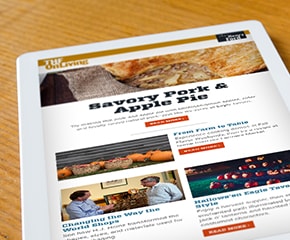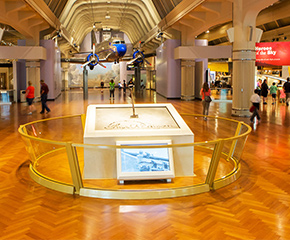
W. L. Reeves Blakeley Records
The W. L. Reeves Blakeley records consist of correspondence, notes, publications, plant samples and hand tools related to Blakeley's travels in Brazil for Ford Motor Company.
Biographical / Historical Note
W.L. Reeves Blakeley led an expedition for the Ford Motor Company to select a rubber site in Para, Brazil. A tract of 2,500,000 acres on the east bank of the Tapajos River was selected with a frontage of twelve miles on the river. In the summer of 1927,...
MoreW.L. Reeves Blakeley led an expedition for the Ford Motor Company to select a rubber site in Para, Brazil. A tract of 2,500,000 acres on the east bank of the Tapajos River was selected with a frontage of twelve miles on the river. In the summer of 1927, a new company, Companhia Ford Industrial do Brasil, was formed to operate the enterprise. The tract was named Fordlandia. In the spring of 1928, a crew of twenty-five men was dispatched to clear the land under Blakeley's supervision. Blakeley was recalled later that year.
LessScope and Content Note
The W.L. Reeves Blakeley Records are comprised of documentation of experiments, test papers, plant samples, printed material and a few hand tools.
Collection Details
Object ID: 64.167.534.0
Creator: Blakeley, W. L. Reeves
Inclusive Dates: 1925-1928
Size: 2.6 cubic ft. (7 boxes)
Language: English | Spanish | Portuguese
Collection Access & Use
Item Location: Not Currently On Exhibit
Access Restrictions: The records are open for research.
Credit: From the Collections of The Henry Ford. Gift of Ford Motor Company.
Digitized Artifacts From This Collection
In many cases, not all artifacts have been digitized.
Contact us for more information about this collection.
"Plant Samples--Sample #73--Java Sisal, Red Sisal and Current Sisal, 1931"
Artifact
Plant fiber
Summary
In 1928, Henry Ford established rubber tree plantations in the Brazilian rainforest to supply rubber for automobile production. He also explored how to profit from the native plants already growing on his land holdings. Samples of Brazilian plants like this were sent to Ford's Rouge factory in Dearborn, Michigan, to determine if they could be used to make commercially viable products.
Object ID
64.167.534.1.14
Credit
From the Collections of The Henry Ford. Gift of Ford Motor Company.
Location
By Request in the Benson Ford Research Center
Get more details in Digital Collections at:
"Plant Samples--Sample #73--Java Sisal, Red Sisal and Current Sisal, 1931"
What is The Henry Ford?
The national attraction for discovering your ingenuity while exploring America’s spirit of innovation. There is always much to see and do at The Henry Ford.
"Plant Samples--Sample #49--Malva Pirango, 1931"
Artifact
Plant fiber
Summary
In 1928, Henry Ford established rubber tree plantations in the Brazilian rainforest to supply rubber for automobile production. He also explored how to profit from the native plants already growing on his land holdings. Samples of Brazilian plants like this were sent to Ford's Rouge factory in Dearborn, Michigan, to determine if they could be used to make commercially viable products.
Object ID
64.167.534.1.8
Credit
From the Collections of The Henry Ford. Gift of Ford Motor Company.
Location
By Request in the Benson Ford Research Center
Get more details in Digital Collections at:
"Plant Samples--Sample #49--Malva Pirango, 1931"
What is The Henry Ford?
The national attraction for discovering your ingenuity while exploring America’s spirit of innovation. There is always much to see and do at The Henry Ford.
Tree Bark and Wood Pulp Samples from Brazil, Sample #1, Timbo Assu, 1925-1928
Artifact
Plant fiber
Summary
In 1928, Henry Ford established rubber tree plantations in the Brazilian rainforest to supply rubber for automobile production. He also explored how to profit from the native plants already growing on his land holdings. Samples of Brazilian plants like this were sent to Ford's Rouge factory in Dearborn, Michigan, to determine if they could be used to make commercially viable products.
Object ID
64.167.534.1.16
Credit
From the Collections of The Henry Ford. Gift of Ford Motor Company.
Location
By Request in the Benson Ford Research Center
Get more details in Digital Collections at:
Tree Bark and Wood Pulp Samples from Brazil, Sample #1, Timbo Assu, 1925-1928
What is The Henry Ford?
The national attraction for discovering your ingenuity while exploring America’s spirit of innovation. There is always much to see and do at The Henry Ford.
Tree Bark and Wood Pulp Samples from Brazil, Sample #10, 1925-1928
Artifact
Plant fiber
Summary
In 1928, Henry Ford established rubber tree plantations in the Brazilian rainforest to supply rubber for automobile production. He also explored how to profit from the native plants already growing on his land holdings. Samples of Brazilian plants like this were sent to Ford's Rouge factory in Dearborn, Michigan, to determine if they could be used to make commercially viable products.
Object ID
64.167.534.1.25
Credit
From the Collections of The Henry Ford. Gift of Ford Motor Company.
Location
By Request in the Benson Ford Research Center
Get more details in Digital Collections at:
Tree Bark and Wood Pulp Samples from Brazil, Sample #10, 1925-1928
What is The Henry Ford?
The national attraction for discovering your ingenuity while exploring America’s spirit of innovation. There is always much to see and do at The Henry Ford.
Tree Bark and Wood Pulp Samples from Brazil, Sample #12, 1925-1928
Artifact
Plant fiber
Summary
In 1928, Henry Ford established rubber tree plantations in the Brazilian rainforest to supply rubber for automobile production. He also explored how to profit from the native plants already growing on his land holdings. Samples of Brazilian plants like this were sent to Ford's Rouge factory in Dearborn, Michigan, to determine if they could be used to make commercially viable products.
Object ID
64.167.534.1.27
Credit
From the Collections of The Henry Ford. Gift of Ford Motor Company.
Location
By Request in the Benson Ford Research Center
Get more details in Digital Collections at:
Tree Bark and Wood Pulp Samples from Brazil, Sample #12, 1925-1928
What is The Henry Ford?
The national attraction for discovering your ingenuity while exploring America’s spirit of innovation. There is always much to see and do at The Henry Ford.
Tree Bark and Wood Pulp Samples from Brazil, Sample #14, 1925-1928
Artifact
Plant fiber
Summary
In 1928, Henry Ford established rubber tree plantations in the Brazilian rainforest to supply rubber for automobile production. He also explored how to profit from the native plants already growing on his land holdings. Samples of Brazilian plants like this were sent to Ford's Rouge factory in Dearborn, Michigan, to determine if they could be used to make commercially viable products.
Object ID
64.167.534.1.29
Credit
From the Collections of The Henry Ford. Gift of Ford Motor Company.
Location
By Request in the Benson Ford Research Center
Get more details in Digital Collections at:
Tree Bark and Wood Pulp Samples from Brazil, Sample #14, 1925-1928
What is The Henry Ford?
The national attraction for discovering your ingenuity while exploring America’s spirit of innovation. There is always much to see and do at The Henry Ford.
"Plant Samples--Sample #9--Manilla String, 1931"
Artifact
Plant fiber
Summary
In 1928, Henry Ford established rubber tree plantations in the Brazilian rainforest to supply rubber for automobile production. He also explored how to profit from the native plants already growing on his land holdings. Samples of Brazilian plants like this were sent to Ford's Rouge factory in Dearborn, Michigan, to determine if they could be used to make commercially viable products.
Object ID
64.167.534.1.1
Credit
From the Collections of The Henry Ford. Gift of Ford Motor Company.
Location
By Request in the Benson Ford Research Center
Get more details in Digital Collections at:
"Plant Samples--Sample #9--Manilla String, 1931"
What is The Henry Ford?
The national attraction for discovering your ingenuity while exploring America’s spirit of innovation. There is always much to see and do at The Henry Ford.
"Plant Samples--Sample #16--Wild Cotton, 1931"
Artifact
Plant fiber
Summary
In 1928, Henry Ford established rubber tree plantations in the Brazilian rainforest to supply rubber for automobile production. He also explored how to profit from the native plants already growing on his land holdings. Samples of Brazilian plants like this were sent to Ford's Rouge factory in Dearborn, Michigan, to determine if they could be used to make commercially viable products.
Object ID
64.167.534.1.4
Credit
From the Collections of The Henry Ford. Gift of Ford Motor Company.
Location
By Request in the Benson Ford Research Center
Get more details in Digital Collections at:
"Plant Samples--Sample #16--Wild Cotton, 1931"
What is The Henry Ford?
The national attraction for discovering your ingenuity while exploring America’s spirit of innovation. There is always much to see and do at The Henry Ford.
Tree Bark and Wood Pulp Samples from Brazil, Sample #6, Apuhy, 1925-1928
Artifact
Plant fiber
Summary
In 1928, Henry Ford established rubber tree plantations in the Brazilian rainforest to supply rubber for automobile production. He also explored how to profit from the native plants already growing on his land holdings. Samples of Brazilian plants like this were sent to Ford's Rouge factory in Dearborn, Michigan, to determine if they could be used to make commercially viable products.
Object ID
64.167.534.1.21
Credit
From the Collections of The Henry Ford. Gift of Ford Motor Company.
Location
By Request in the Benson Ford Research Center
Get more details in Digital Collections at:
Tree Bark and Wood Pulp Samples from Brazil, Sample #6, Apuhy, 1925-1928
What is The Henry Ford?
The national attraction for discovering your ingenuity while exploring America’s spirit of innovation. There is always much to see and do at The Henry Ford.

















